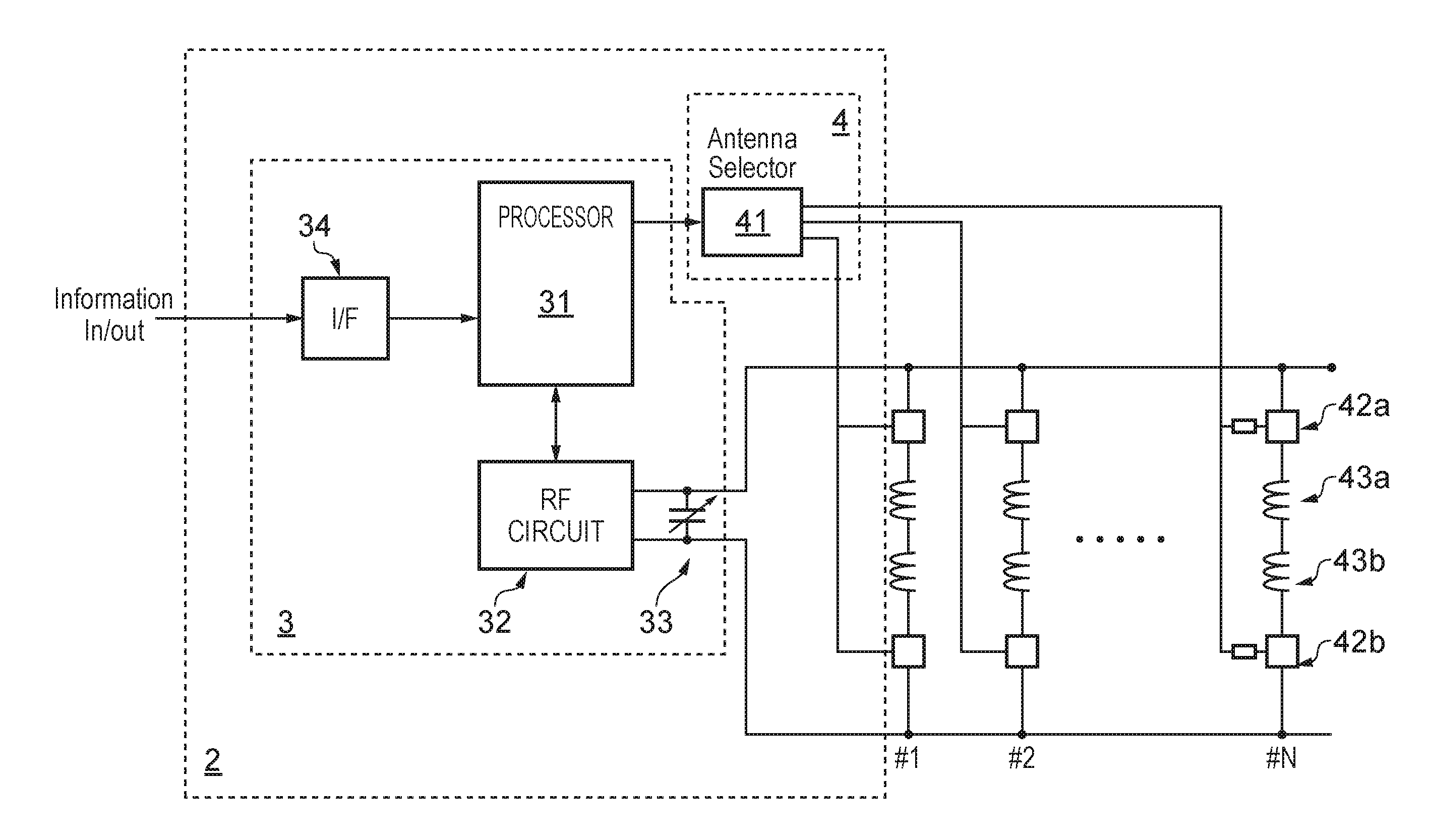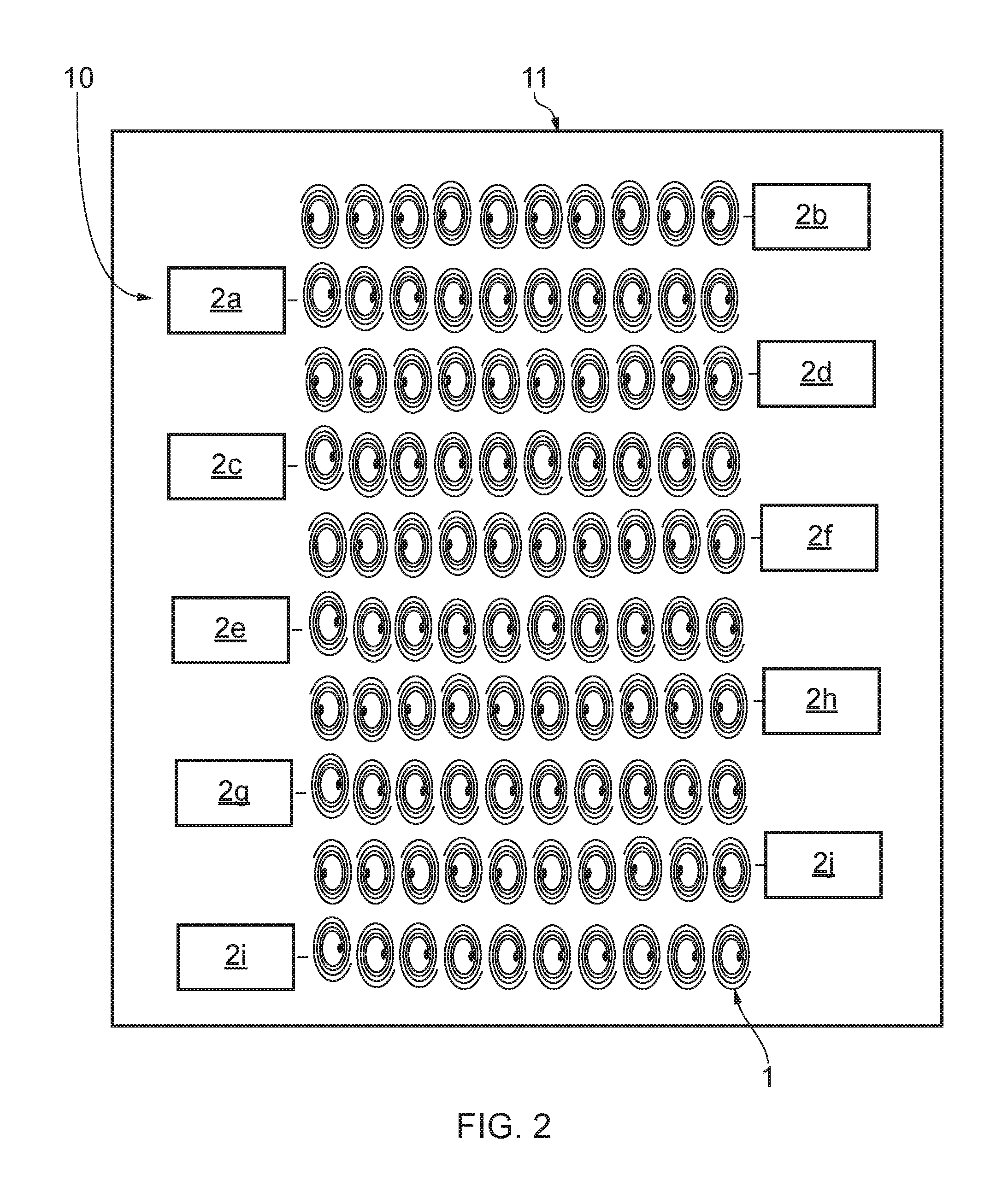RFID reader having an array of antennas
a technology of antenna array and reader, applied in the direction of sensing record carriers, instruments, sensing electromagnetic radiation, etc., can solve the problems of unidentifiable samples, easy erasement or smudging of written notes on containers, and exacerbated problems
- Summary
- Abstract
- Description
- Claims
- Application Information
AI Technical Summary
Benefits of technology
Problems solved by technology
Method used
Image
Examples
Embodiment Construction
[0039]A first embodiment of an RFID reader, 10 according to the present invention is shown in FIG. 1. A strip (row) of 10 multilayer antennas 1 forms a 1×10 array. The multilayer antennas are connected to one another in parallel (see FIG. 3) so that each multilayer antenna is connected to an electronics unit 2 via at least one switch. The electronics unit controls the writing of information to and the reading of information from RFID tags.
[0040]Each antenna 1 is configured to interact on a one-to-one basis with an RFID tagged vial via inductive coupling. The RFID reader may be configured only to read each of a plurality of tagged vials or alternatively may be configured to both read and write to each of a plurality of tagged vials.
[0041]To read each of a plurality of vials placed in proximity to the RFID reader 10, an interrogation command signal is sent from the reader to the individual RFID tagged vial via its dedicated multilayer antenna.
[0042]In the case where the RFID reader ca...
PUM
 Login to View More
Login to View More Abstract
Description
Claims
Application Information
 Login to View More
Login to View More - R&D
- Intellectual Property
- Life Sciences
- Materials
- Tech Scout
- Unparalleled Data Quality
- Higher Quality Content
- 60% Fewer Hallucinations
Browse by: Latest US Patents, China's latest patents, Technical Efficacy Thesaurus, Application Domain, Technology Topic, Popular Technical Reports.
© 2025 PatSnap. All rights reserved.Legal|Privacy policy|Modern Slavery Act Transparency Statement|Sitemap|About US| Contact US: help@patsnap.com



